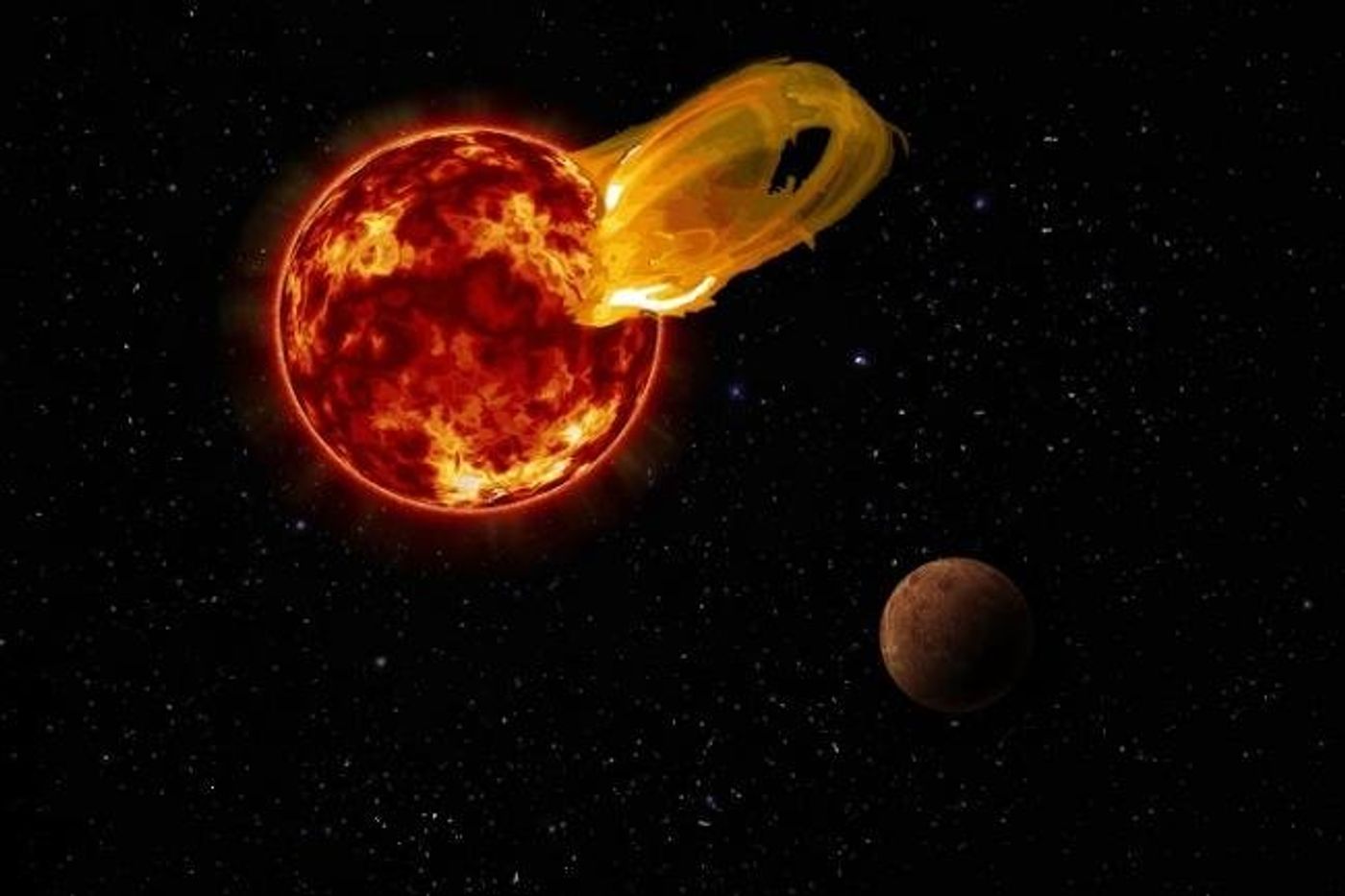Proxima b May Not Be a Habitable Exoplanet After All
Orbiting the nearby star Proxima Centauri is an Earth-like exoplanet called Proxima b. Planetary scientists have marveled over Proxima b’s potential habitability since its detection in 2016, but the 4.25 light years that separate this distant world from our own make it challenging to study.
Image Credit: NASA/SDO, NASA/JPL
Challenges aside, an exoplanet’s host star can speak volumes about its habitability, and recent findings uncovered by astronomers from the Carnegie Institution for Science may come with implications for Proxima b’s ability to support life.
The astronomers stumbled upon a rather bright solar flare emanating from Proxima Centauri while studying the star with the Atacama Large Millimeter/submillimeter Array (ALMA) in Chile last year.
Citing the study, which has been published in The Astrophysical Journal Letters this week, the flare reached a peak luminosity of more than ten times what we’d expect from our own Sun during its most violent lash-outs.
And if that’s not extreme enough, the astronomers say the flare out-shined Proxima Centauri’s normal brightness by more than 1,000 times during a ten-second period.
Related: NASA's upcoming James Webb Space Telescope will help us explore Proxima b
Powerful solar flares like this one can be a deal-breaker when considering an exoplanet’s habitability. They bombard orbiting exoplanets with high amounts of deadly radiation, and life as we know it doesn’t take too kindly to harsh environments of this nature.
“It's likely that Proxima b was blasted by high energy radiation during this flare,” explained study lead author Meredith McGregor.
“Over the billions of years since Proxima b formed, flares like this one could have evaporated any atmosphere or ocean and sterilized the surface, suggesting that habitability may involve more than just being the right distance from the host star to have liquid water.”
Related: Does Proxima b have a global ocean?
These findings paint a bleak picture concerning Proxima b’s ability to support life. It seems unlikely given the high levels of radiation that the exoplanet experiences from its host star, and it further underscores the uniqueness our solar system compared to neighboring stellar systems.
“There is now no reason to think that there is a substantial amount of dust around Proxima Cen,” added study co-author Alycia Weinberger in a statement. “Nor is there any information yet that indicates the star has a rich planetary system like ours.”
Source: Carnegie Science









